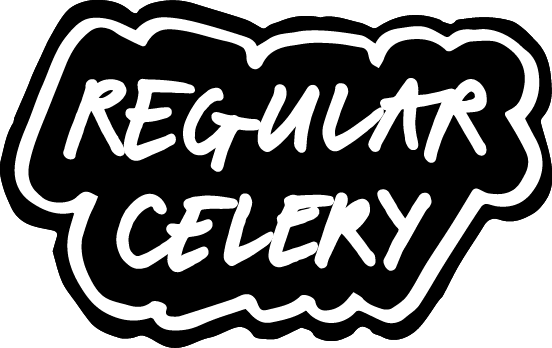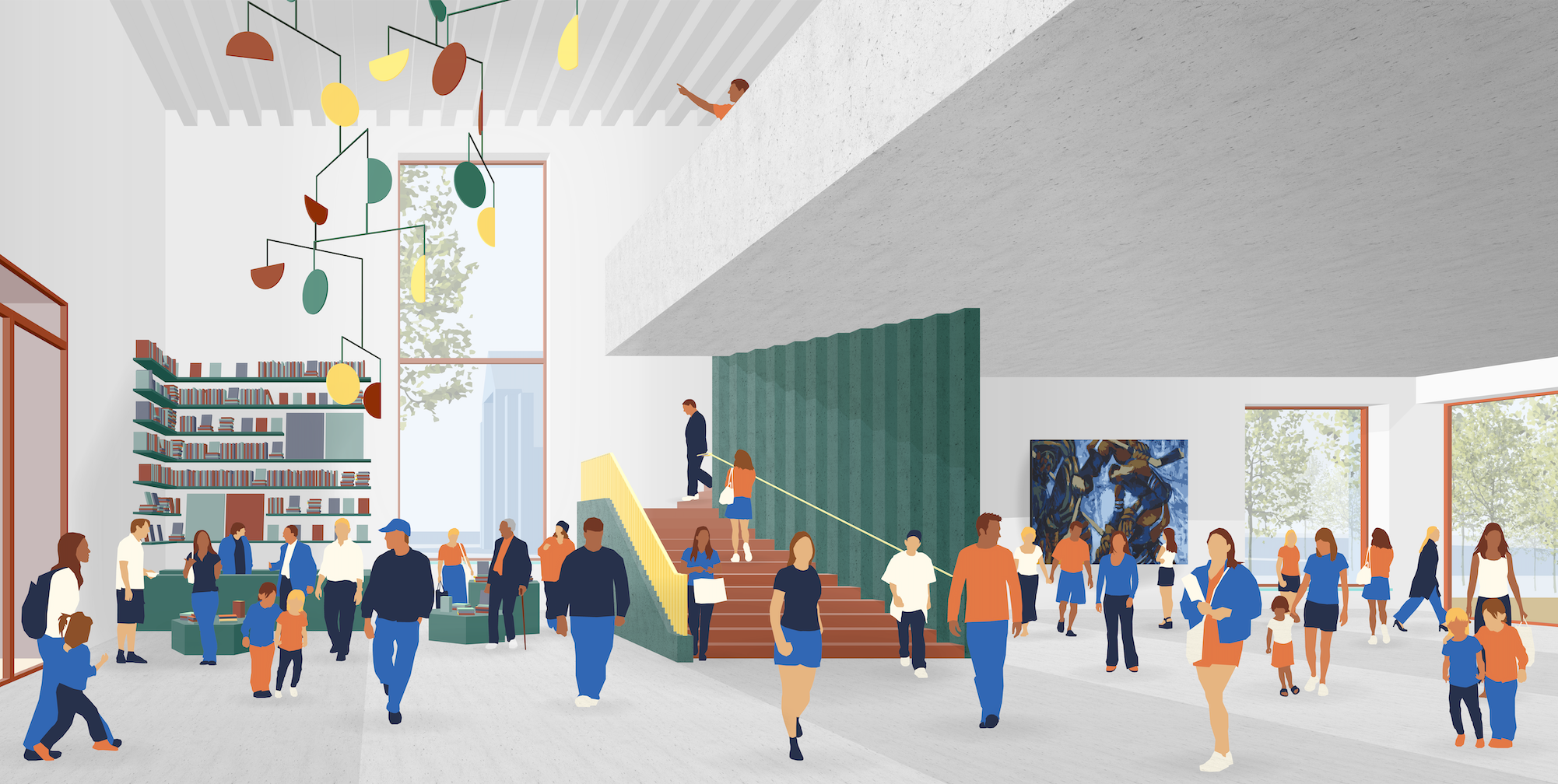Sara Hilden Gallery
Competition Entry for an art museum in the Finnish city of Tampere. Produced in collaboration with Anthony Newton.
–
Relocating the Sara Hilden Art Gallery and its international modern and contemporary art collections to the Finlayson Area positions the gallery in the cultural and historic heart of the city of Tampere. It provides a home, notably, to the work of Erik Enroth – an integral part of the Gallery’s collection – within the industrial environment that greatly inspired his work.
In the same way Enroth was inspired by this environment, our architectural proposal takes inspiration from the 19th century industrial buildings of the Finlayson area and fully integrates into the urban grain. We propose a contemporary brick building with distinctive decorative detailing that physically responds to the unique volumes and characters of the historic buildings which surround it.
–
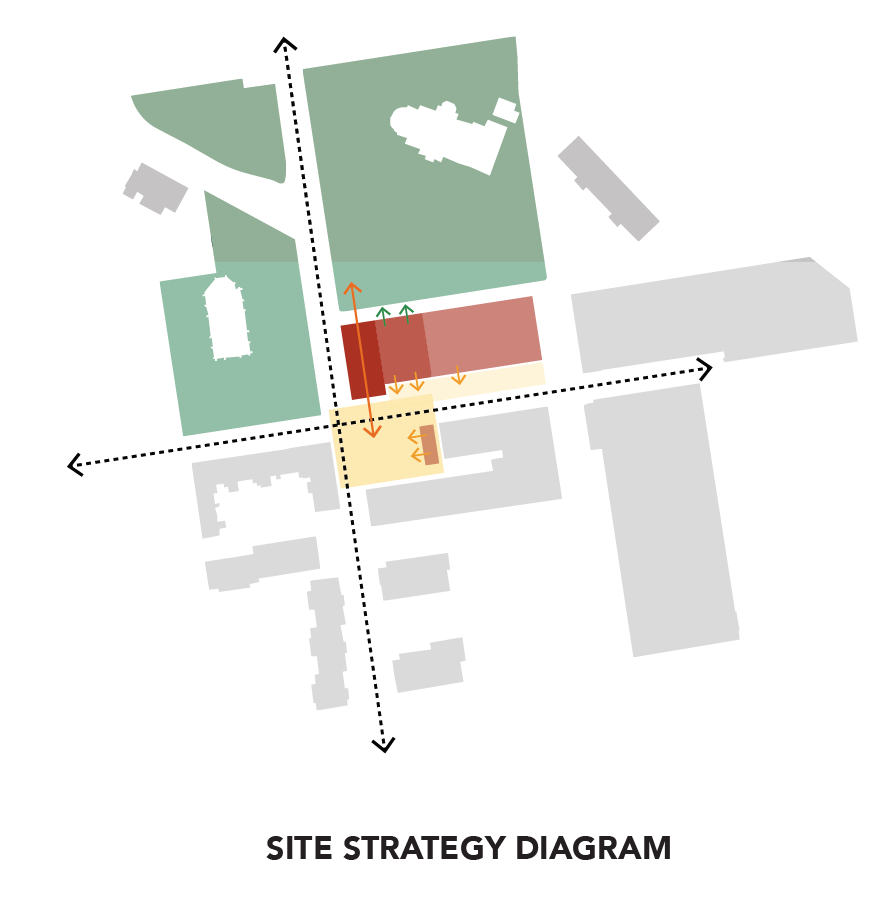
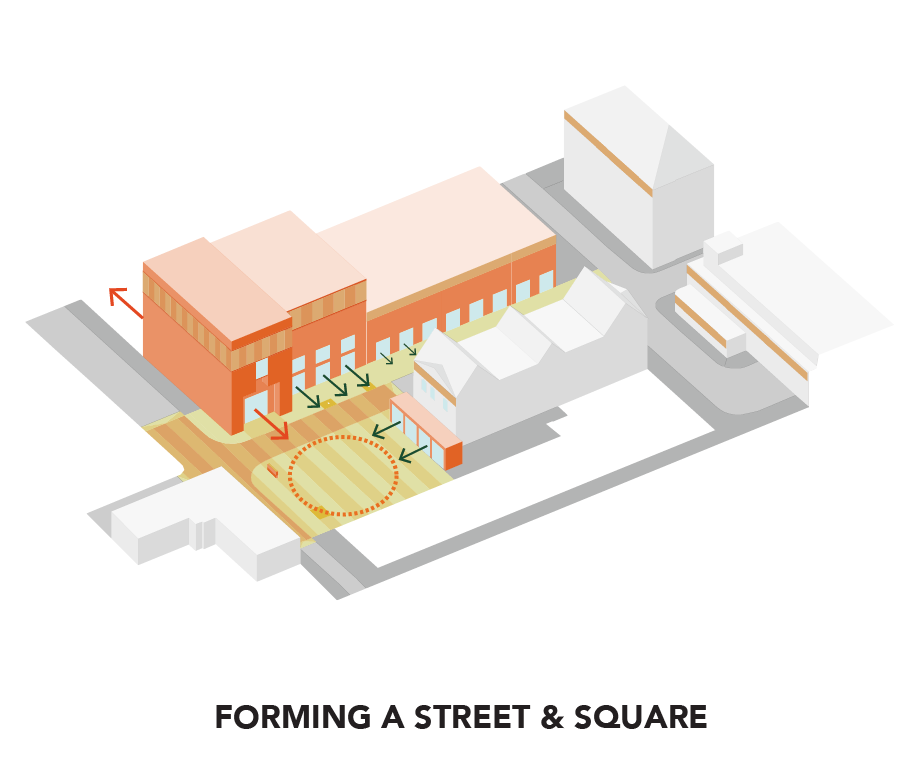
–
URBAN STRATEGY
Our proposal bookends the urban block, enclosing Wilhelm von Nottbeck Park, creating a new square and defining the north edge of Finlaysoninkatu. The square is a place for public events and the display of artwork. It is defined to the north by a new entrance volume, which is positioned at the intersection of Finlaysoninkatu and Kuninkaankatu, forming a strong urban corner. The existing Finlayson Factory Shop and Headquarters provide enclosure, with a new pavilion building creating activity in the form of artist’s studios – a place for artists in residence, expanding the gallery’s outreach programme. Lift and stair access to the underground car park is also housed in this building. The proposed cafe opens on to Finlaysoninkatu, providing active frontage and a pleasant place for customers to sit beneath the mature existing trees. The proposed workshop also opens to Finlaysoninkatu, giving opportunities for both passive and active education. New bicycle storage is provided at the front of the technical wing of the gallery and a drop-off zone for taxis and cars is located to the west of the square.
–
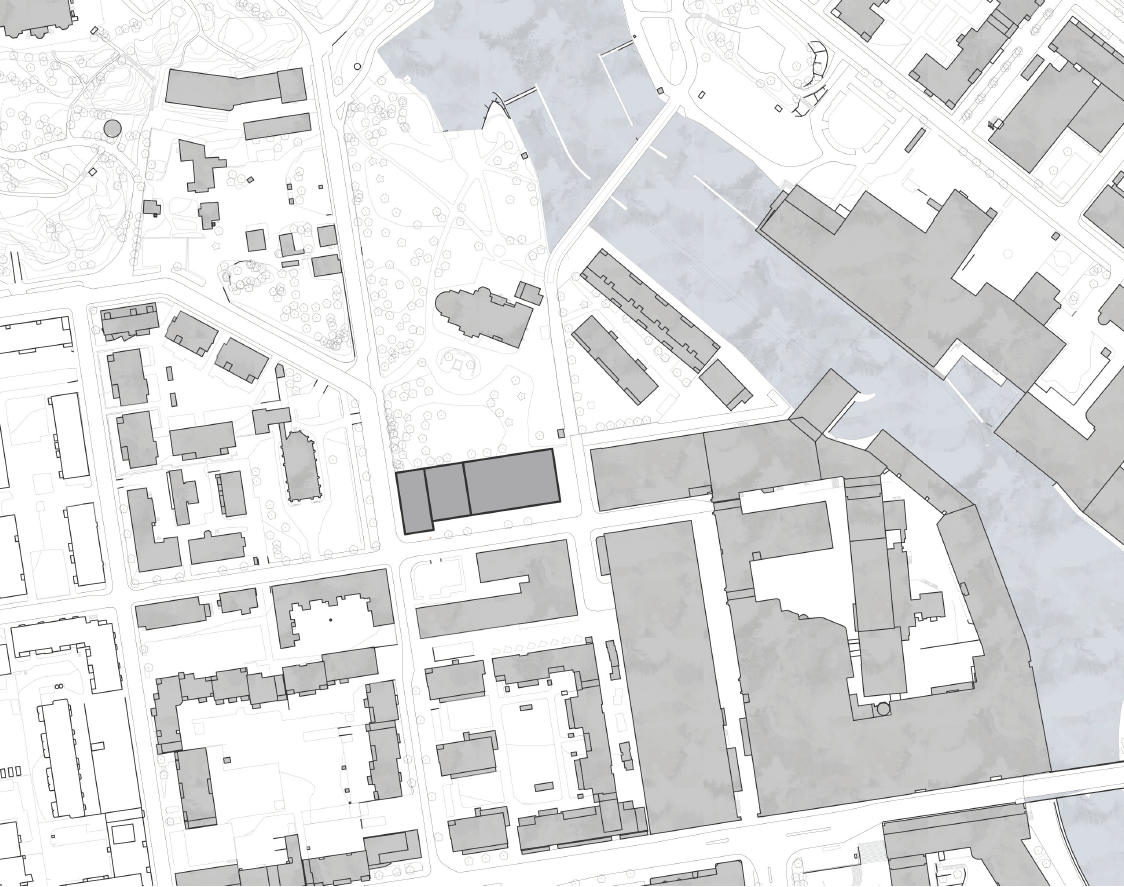
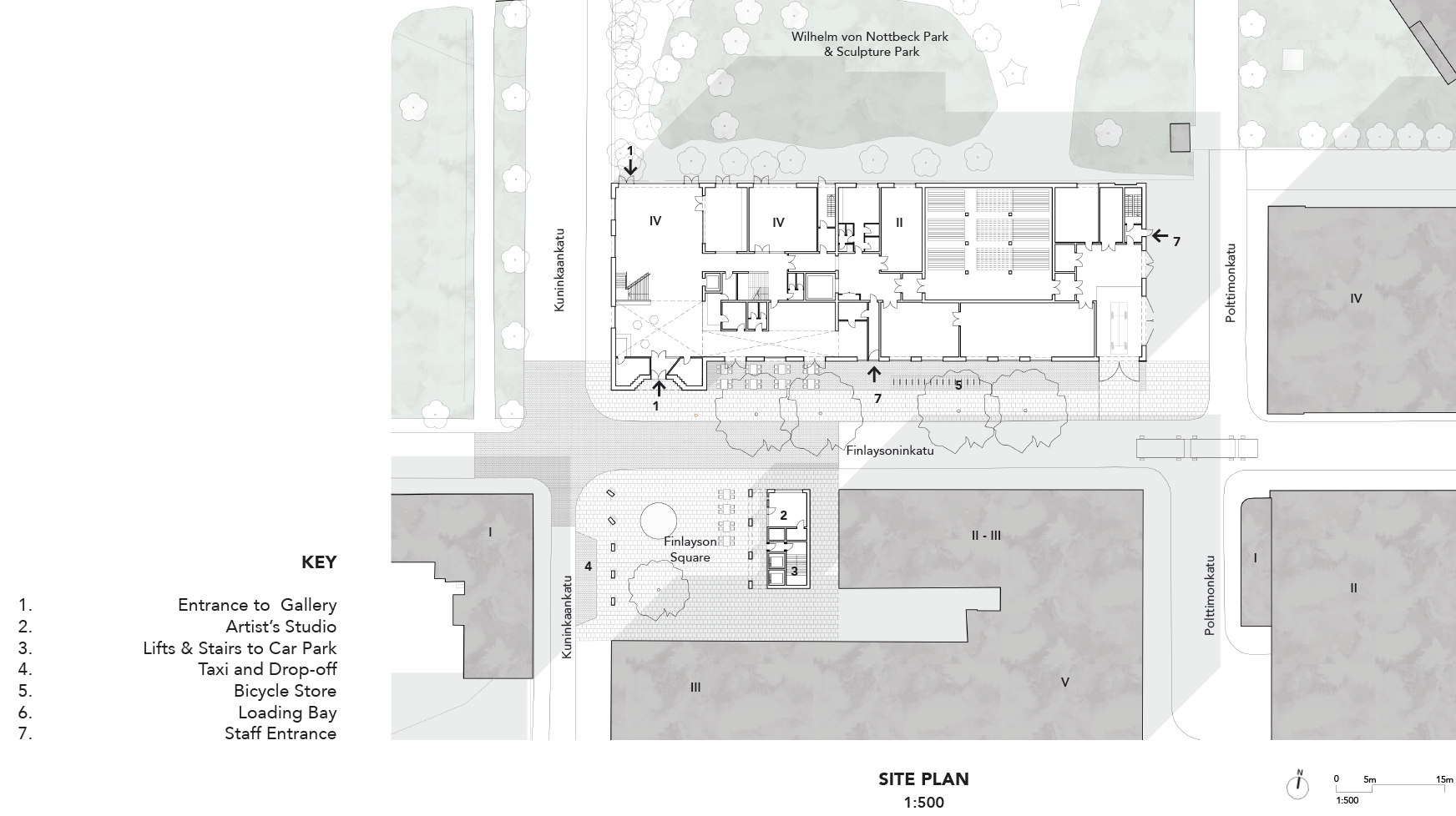
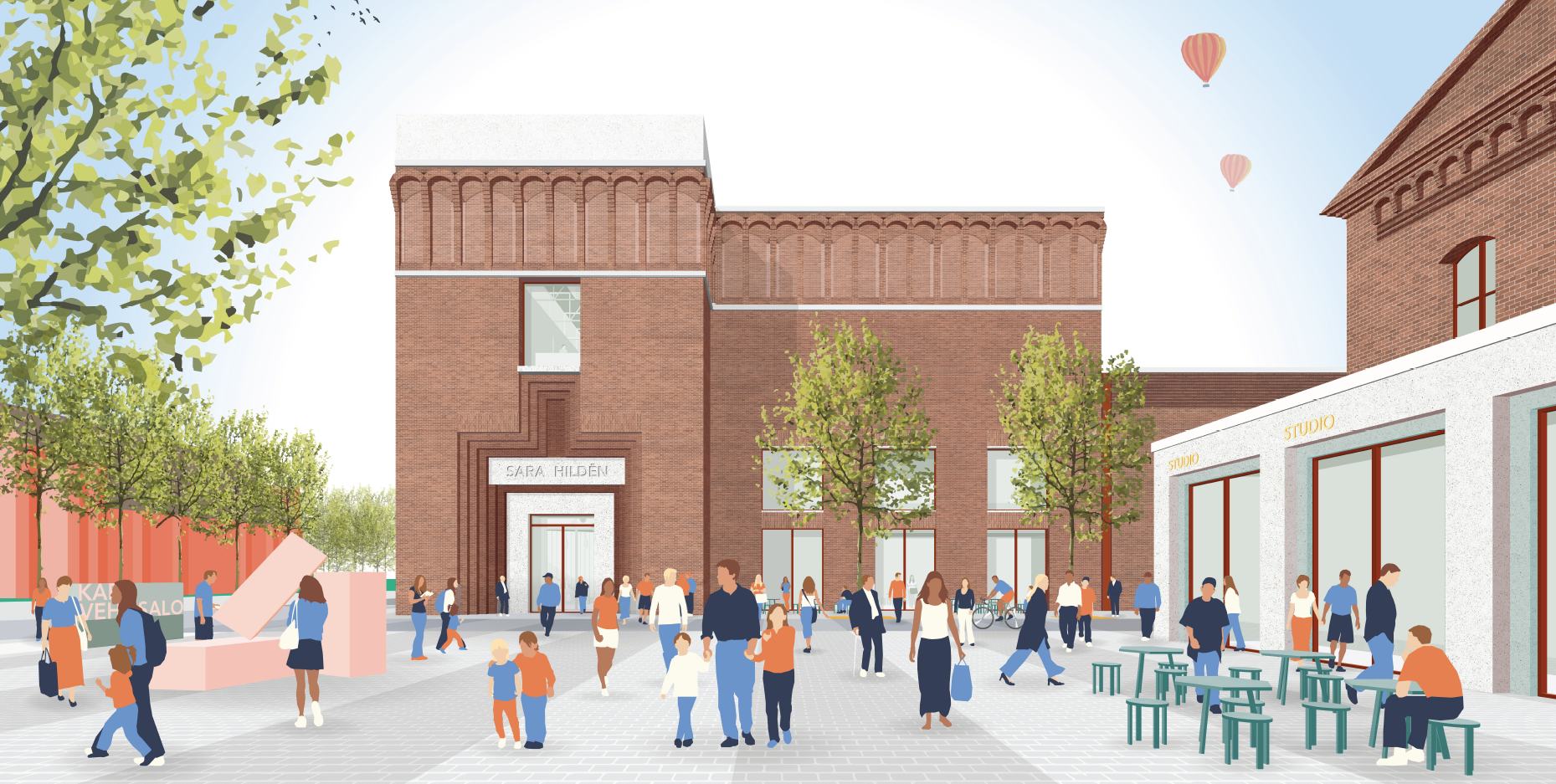
SPATIAL ARRANGEMENT:
The building is arranged so that all the technical requirements of the brief – such as collection store and workshop etc. – can be accessed from the loading space and are at the same level. All of the gallery’s ‘front of house’ spaces, which non-ticket holders are free to use and discover, are located at ground floor – such as the shop, café, meeting rooms and some exhibition space. Also at ground floor, the meeting and multipurpose rooms benefit from separate access and frontage to the park, these offer great rental potential for the Gallery. The main galleries are situated on the first, second and third floors – benefitting from top- light and beautiful views through the tree-tops of the Park. The main galleries are split into two types, one a large ‘Industrial Hall’ space which is suitable for temporary exhibitions, large installation and sculpture pieces. This is a spectacular space, rising to 10m in height and bathed in natural light. The other ‘flexible’ galleries are situated in the eastern wing in a large span space which can be divided in different ways depending on the exhibition programme.
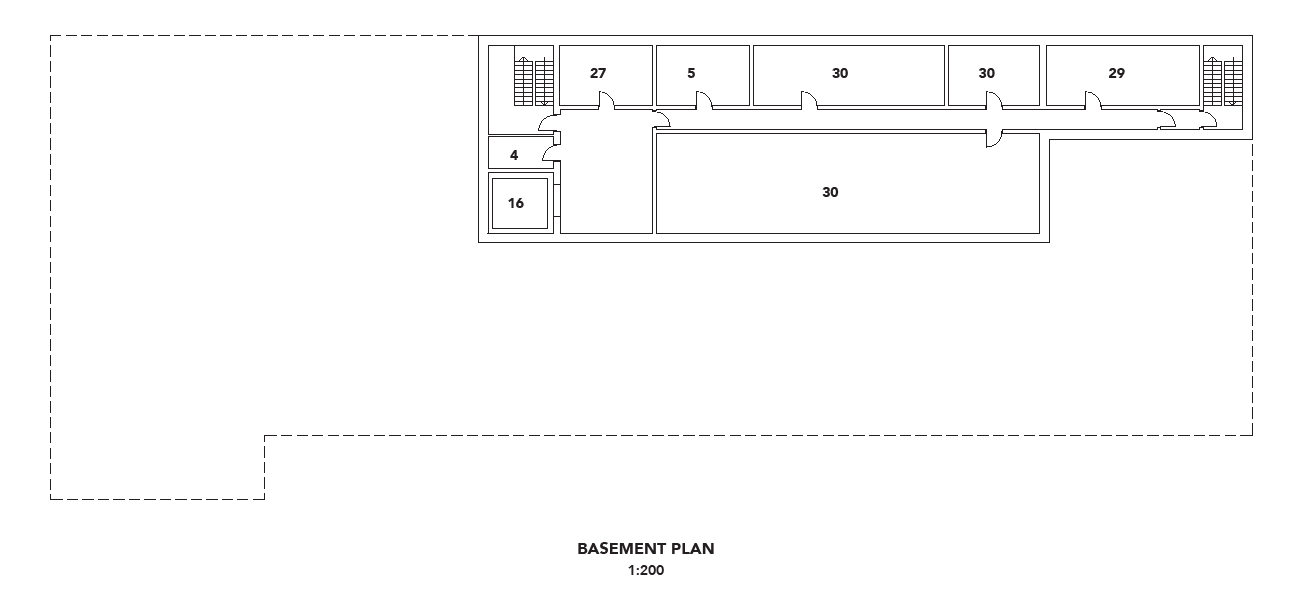
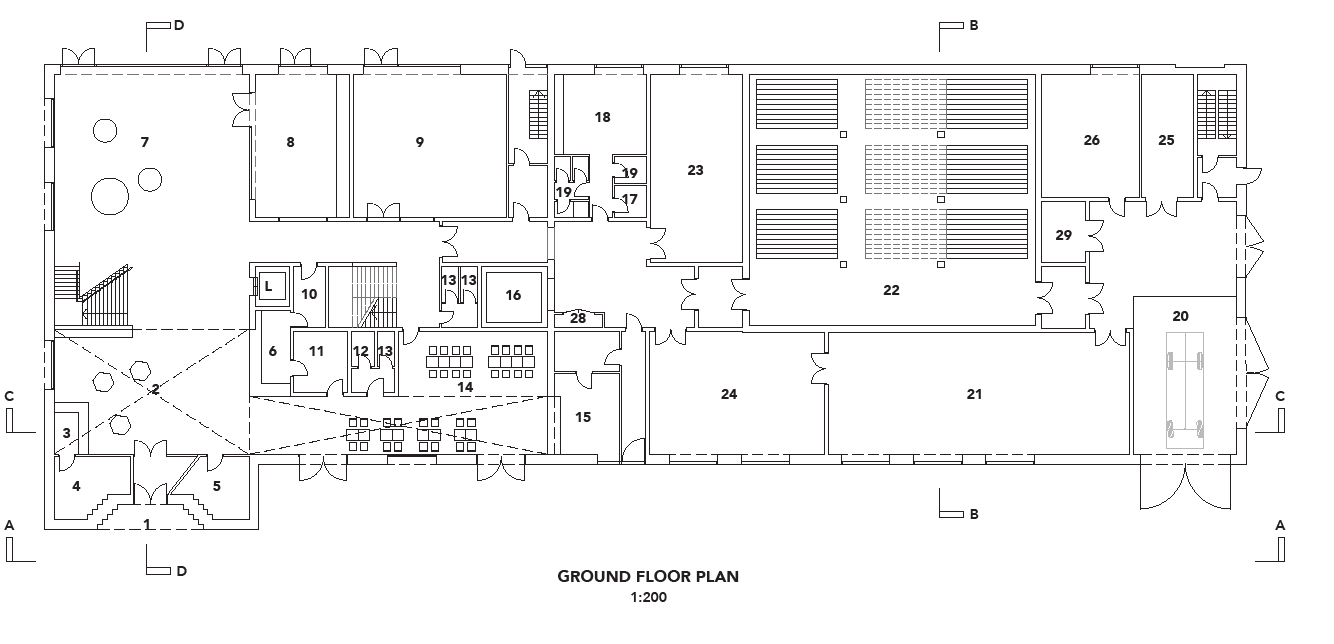
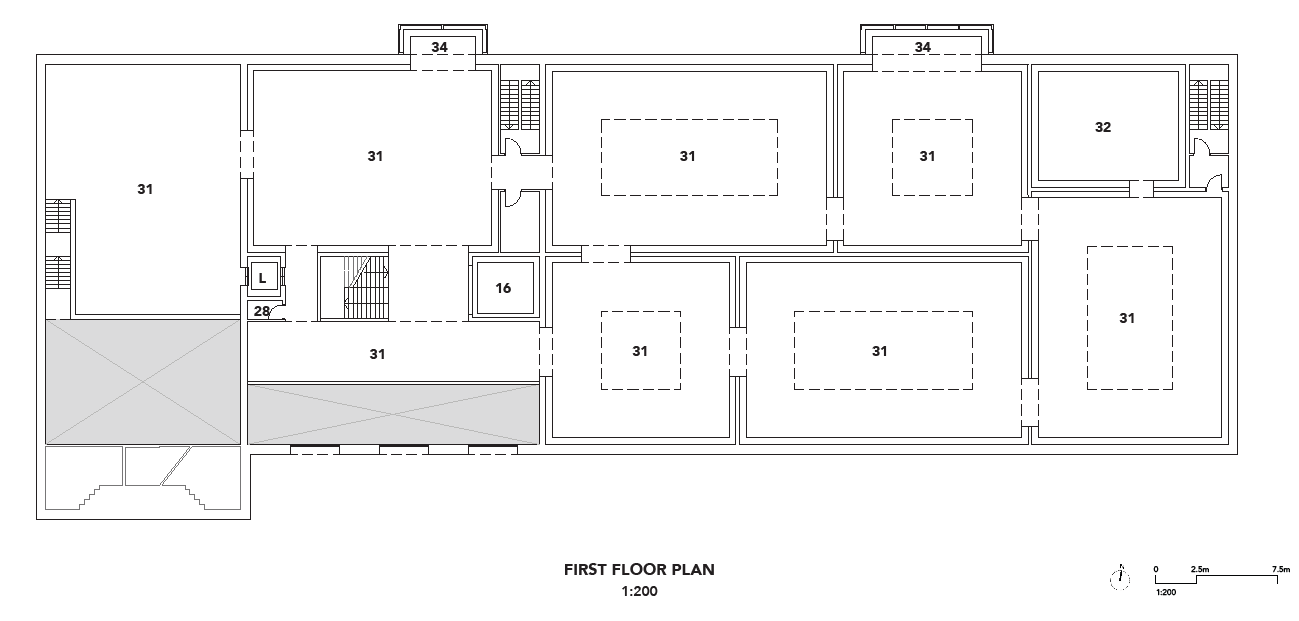
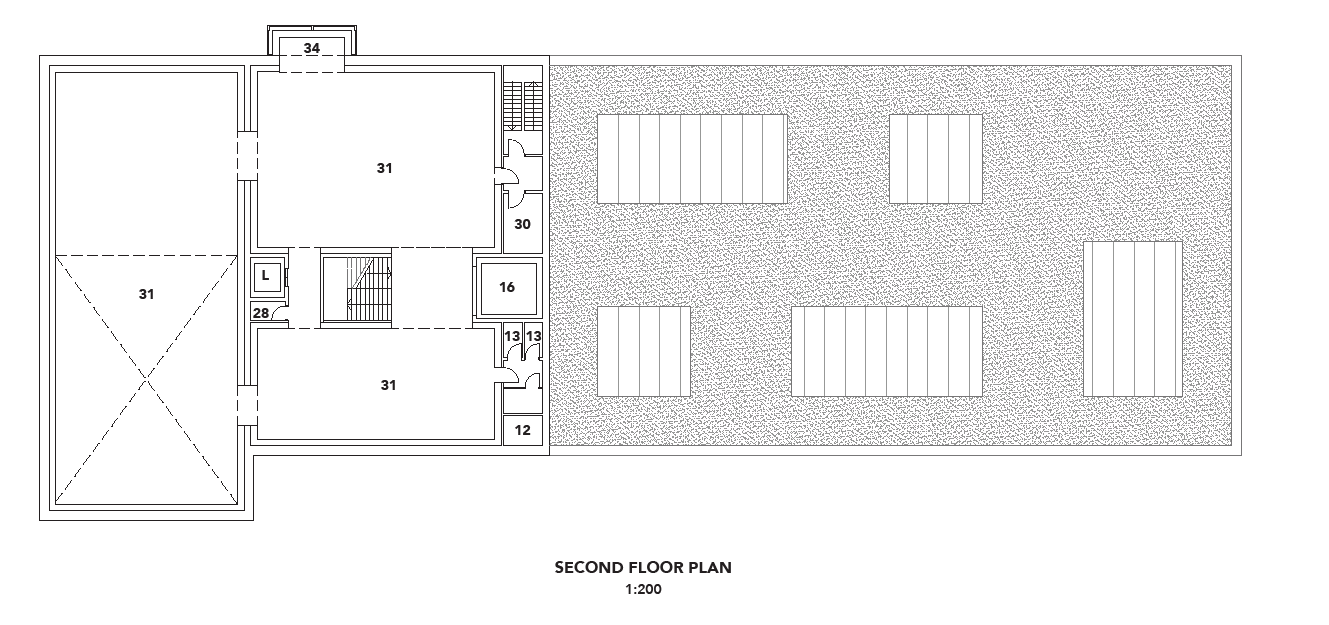
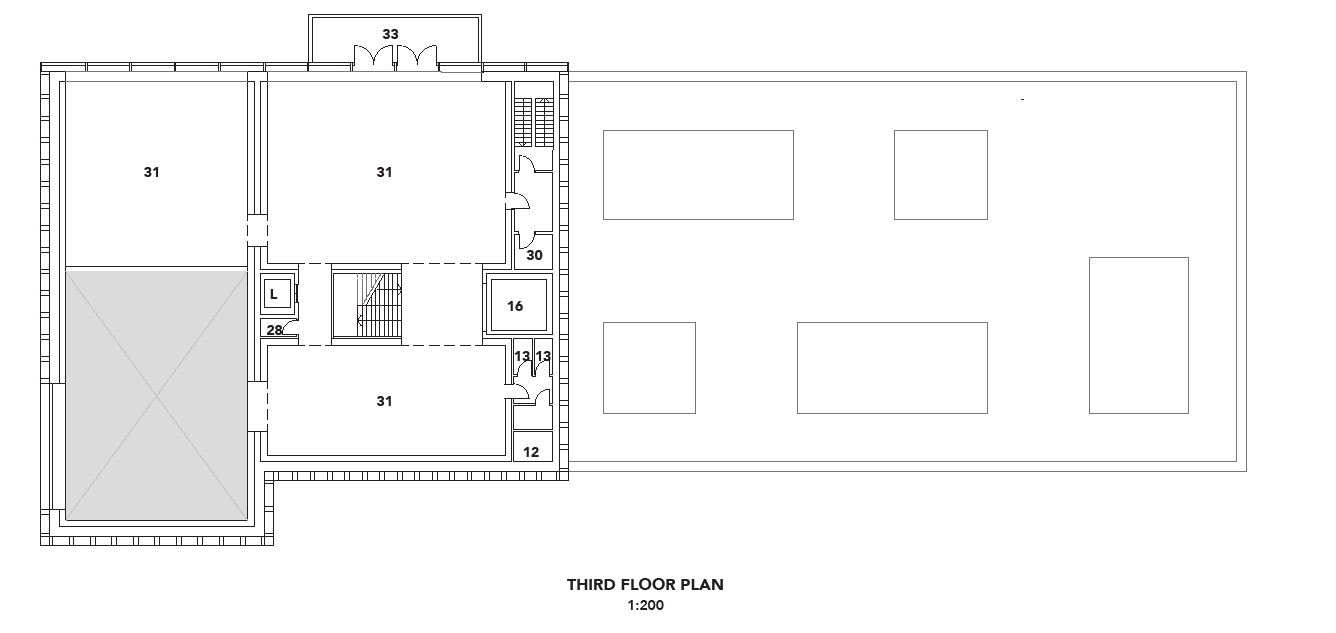
CIRCULATION/MOVEMENT
The main circulation spaces are located at the centre of the building, which provides the greatest flexibility. If there is a need to close certain galleries when preparing for a new exhibition this can be done whilst keeping the other galleries open to the public. For example, the ‘Industrial Hall’ space could be closed off entirely, with full access to the flexible galleries maintained.
Public:
It is anticipated that most visitors will arrive by foot
or bicycle from the city centre, via Kuninkaankatu. At ground floor level, the foyer space is a vibrant and interactive space for the exchange of ideas. The foyer area is flexible and can be used for display, exhibition openings and events. The foyer area accommodates the ticket sales, cloakroom, shop and WCs. The children’s workshop is connected to the foyer and opens onto the park. From the foyer, the route to the galleries is clearly announced by a welcoming staircase in the double height volume which takes the visitor up to the first-floor gallery. The public route is designed as a single loop so that visitors do not have to walk back on themselves. The gallery’s ensemble finishes with large full height windows and a large balcony offering panoramic views across to Finlayson Palace at the end of the visitor’s journey. The shop and café are located near the entrance, so that users can benefit from this without purchasing a ticket and so that gallery visitors can enjoys this at the end of their visit.
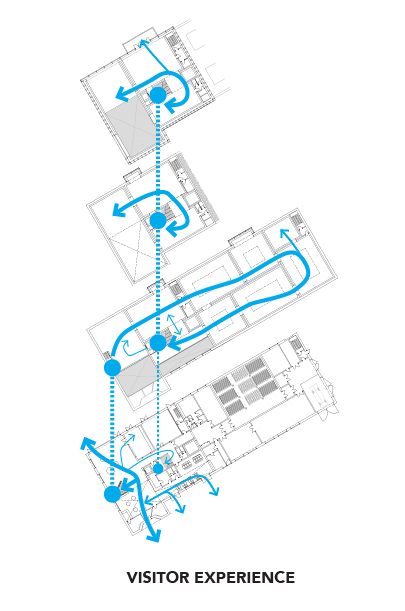
Artwork:
It is proposed that large artwork is delivered via Finlaysoninkatu – which the vehicle path survey has demonstrated is feasible – and into a loading bay at ground floor. The loading bay also has openings in its western elevation, to Polttimonkatu, to provide greater flexibility. From here, the artwork can be taken into the Packing Room, which will have strict environmental conditions, and then into the 4-hour fire rated and lobbied (for security and fire purposes) Collection Store or straight to the galleries. The Conservation and Examination Room benefits from being adjacent to the Collection Store. A large artwork lift has been positioned at the centre of the gallery plan, with large lobbies to accommodate the movement of large works. Its central location ensures that the movement of artwork causes minimal disruption and would not mean that galleries would need to be closed.
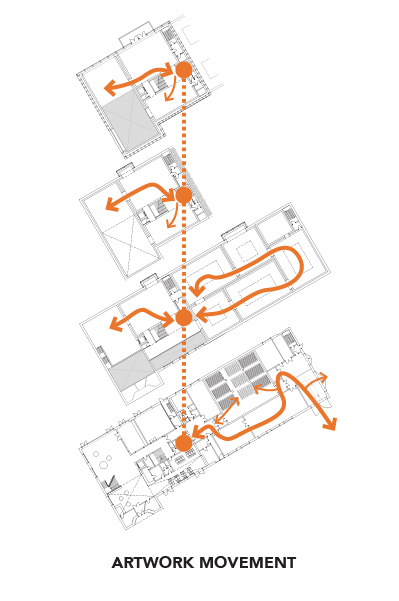
ELEVATION
The building is conceived as three volumes: the first a tall entrance building, which matches the height of the surrounding apartment buildings; the second, a slightly lower volume which matches the height of the Spinning Mill; and the third, which stands at equal height to the Finlayson headquarters building which it faces.
The proposal is clad in richly decorative contemporary brickwork, responding to the industrial buildings of the Finlayson area. The first volume signifies the entrance to the Gallery, taking precedent from the gateway
and entrance buildings of the area’s existing factories, which are typically decorative and larger in scale – an example can be found in the white stucco gateway at the end of Finlaysoninkatu. The new entrance volume provides an elevation, classical in its proportions, to the public square. A large decorative ‘frieze’ takes direct inspiration from the decorative brick eaves of the buildings in the Finlayson area, this will be beautiful in its constructed craft.
In contrast to the entrance volume, the second and third volumes are inspired by the more restrained and utilitarian brick industrial buildings with their stone plinths, gridded facades and more subtly decorated eaves. These volumes define Finlaysoninkatu, completing the historic block structure.
Animated by the shadows of the park’s trees, the rear elevation fronts onto Wilhelm von Nottbeck Park and is more informal and relaxed. At ground level, the multipurpose space, foyer and meeting rooms open out onto the park. At high level, the decorative frieze of the front elevation becomes full-height windows, which provide panoramic views over the park and provide north light to the third-floor galleries. On the lower, eastern gallery levels, bay windows offer breakout spaces within the tree canopy, giving a different perspective on the proposed sculpture park.

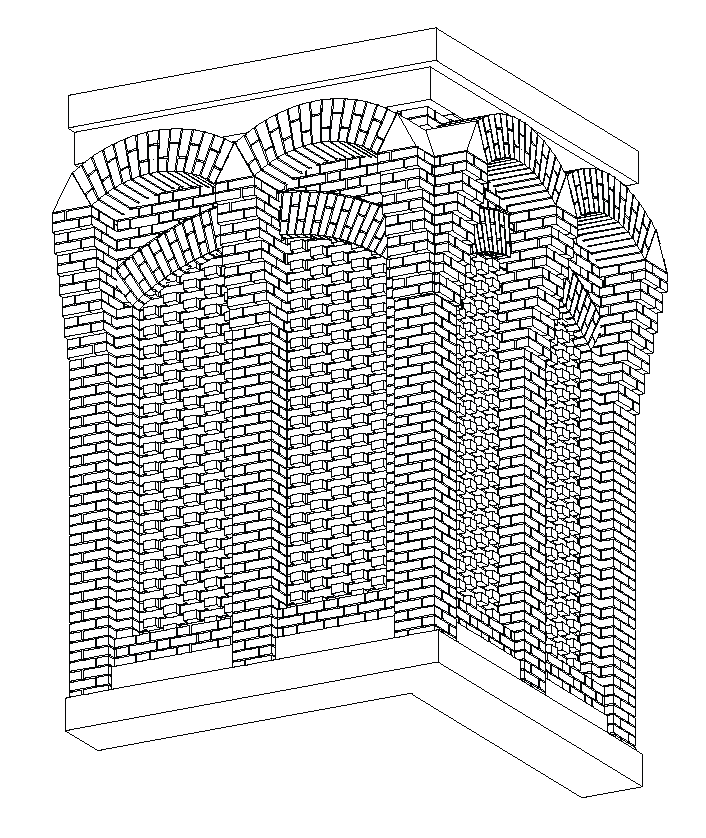
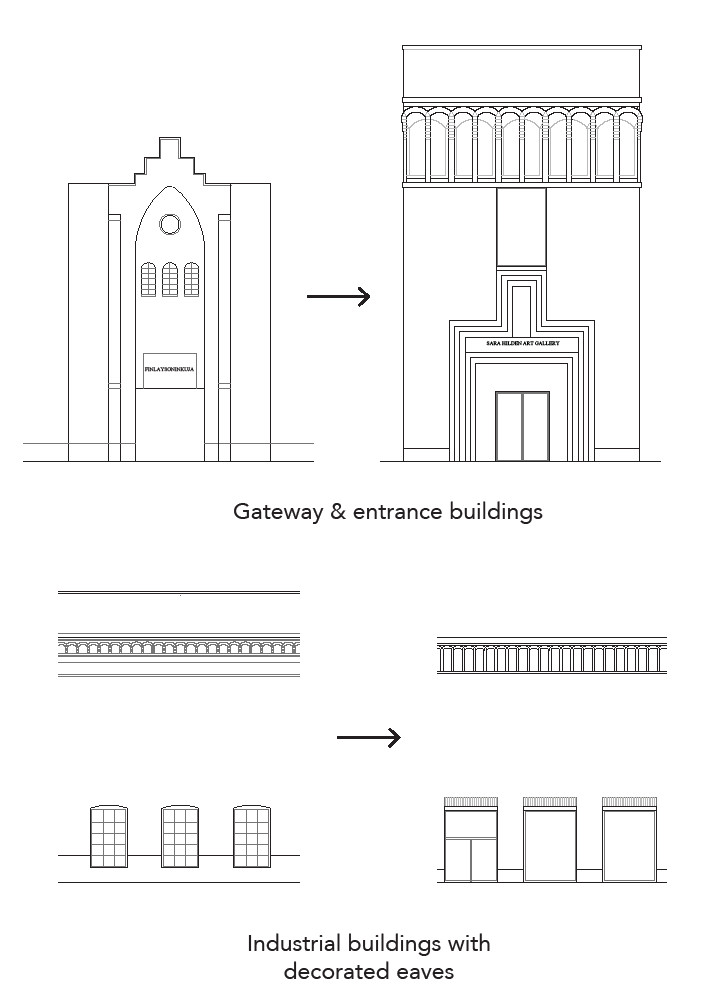
TECHNICAL INFORMATION:
Construction:
In galleries there is a difference between the environment – temperature and humidity – required to preserve the collection and those that are needed for human comfort. Minimum temperatures in galleries tend to be set by human comfort, and it is important to ensure that temperature and humidity do not fluctuate to protect the artwork. For this reason, we propose that the building is built largely in concrete and clad in brick to create a high thermal mass. A 600mm thick external envelope will achieve high levels of thermal insulation. A concrete structure also allows greater loading capacity for the display of sculpture and installation works.
Sustainable Design:
Our proposal seeks a balance between the environmental performance of the building – fabric, daylighting, ventilation, solar shading, active systems – which provide human comfort and the preservation of the Gallery’s collection, while minimising energy used to do this. A robust and flexible building would reduce maintenance in the long term and reduce energy. The building maximises the use of natural daylight as much as possible, reducing energy demands. There are opportunities to explore the use of renewable energy sources, such as photovoltaics on the expansive roof space. Thermal mass and high insulation reduce greatly the requirements for heating and cooling. The embodied energy of the building could be reduced
by optimising the structural solution and introducing timber, or other lower energy construction solutions, where high structural loads for displaying and moving artwork are not desired.



![]()
Lighting:
We understand the need for the gallery lighting design to be truly flexible and its requirements depend
on what is being displayed: for example, 70 lux is generally required for sensitive and paper-based objects, and 150 lux for paintings and sculpture. We propose louvred roof lanterns to the galleries that allow north-light into the space. This would be backed- up with additional ambient artificial light and flexible spotlighting for artwork. When required, external louvres to the rooflights could be closed to stop any natural light coming in. The roof-lanterns drop below the fine timber trusses of the roof structure and have a physical architectural presence in the rooms. The windows which open into the galleries are designed to be easily covered when required.
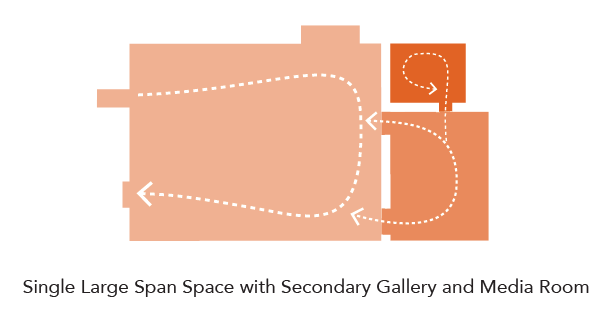
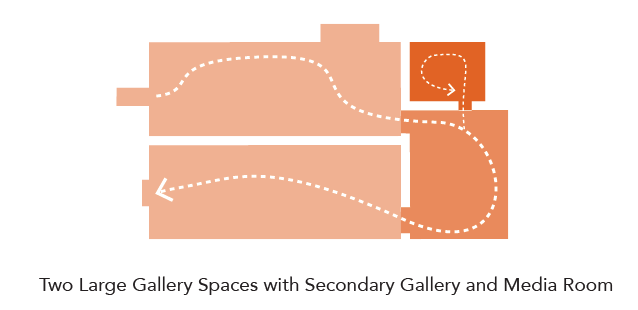
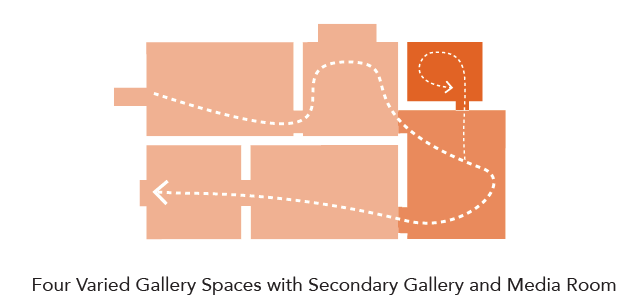
Flexibility:
The Galleries have been inspired by the historic industrial nature of the Finlayson factories – with their north light and large-span roof structures. The eastern gallery wing has been designed to provide greater flexibility for configuring exhibitions – large span timber trusses allow the internal walls to be reconfigured in a number of ways.
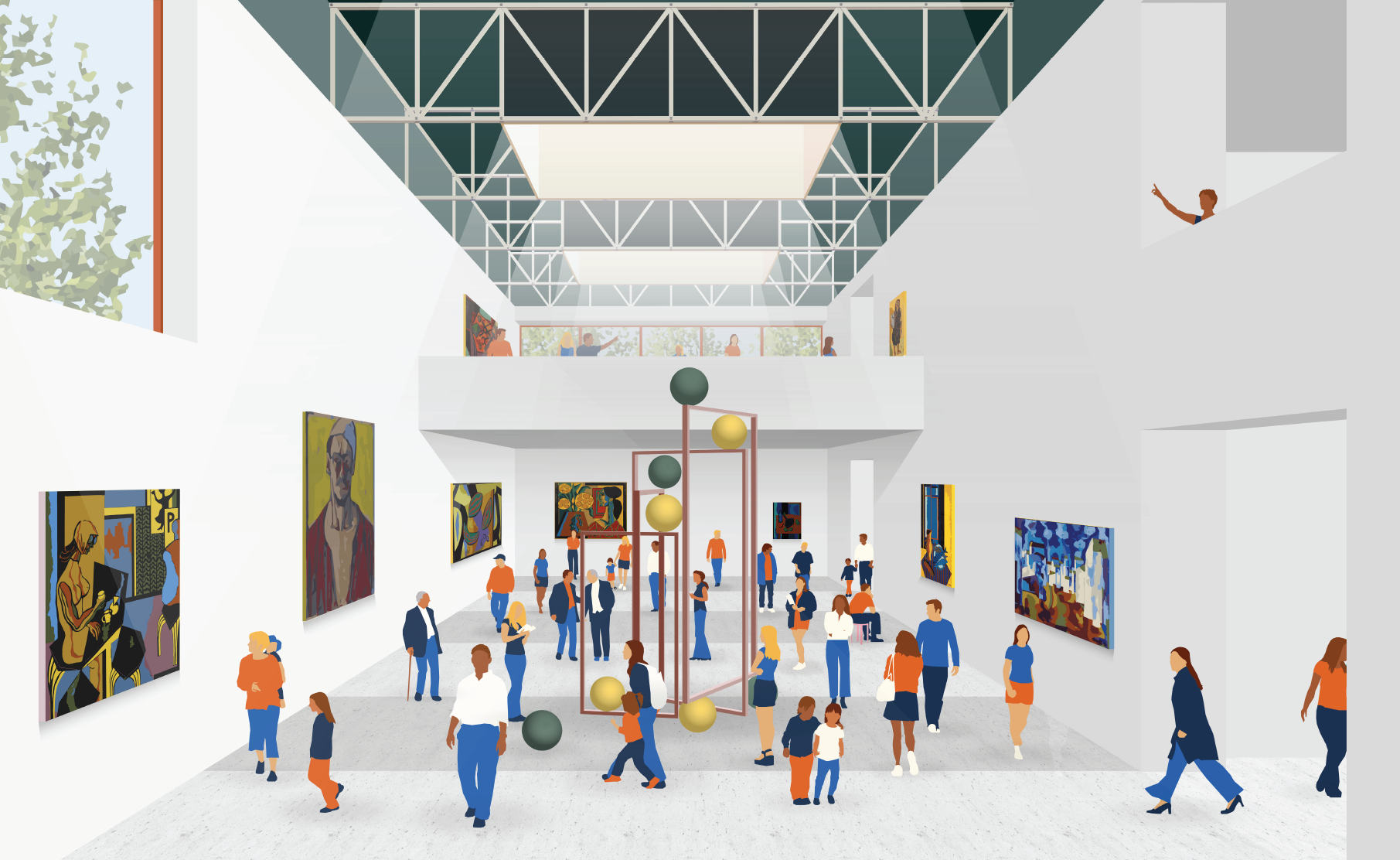
–
